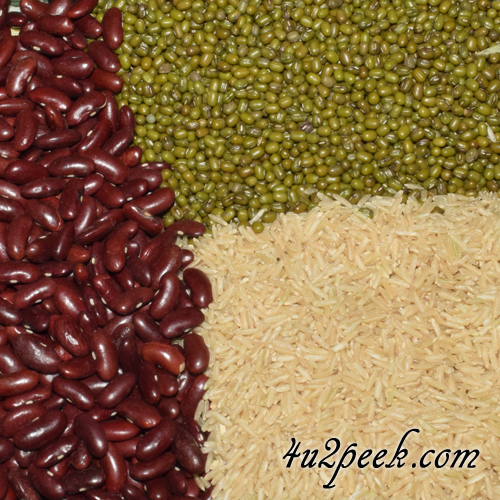Whole Grains Are Good For You
 Medical research has confirmed without doubt that whole grains are good for you. So what exactly are whole grains, would you need to make a drastic change in your diet to accommodate the goodness of whole grains. Let's try to understand this whole issue without throwing technical terms and jargon around. We begin by taking rice as an example, white rice is what most of us are familiar with. This rice appears like a complete seed, so is this what is meant by whole grain. The answer is a big 'NO', and here is the explanation.
Medical research has confirmed without doubt that whole grains are good for you. So what exactly are whole grains, would you need to make a drastic change in your diet to accommodate the goodness of whole grains. Let's try to understand this whole issue without throwing technical terms and jargon around. We begin by taking rice as an example, white rice is what most of us are familiar with. This rice appears like a complete seed, so is this what is meant by whole grain. The answer is a big 'NO', and here is the explanation.
Rice as it is harvested has a thick outer covering which is referred to as the hull of the seed. This portion is inedible, villagers in parts of Asia pound the hull portion once it is taken off the seed. The powder is used for two interesting applications, one is as feed for cattle. Powder is added to the drinking water of the cattle, it is supposed to work as a fiber and keep the digestive system of cattle healthy. Thailand has in recent years found an innovative use for the hull taken off rice seeds, the material is used to prepare bricks to be used in construction. The project is in its infancy, village homes are now being built with those bricks.
Back to the rice seed that is stripped of the hull, you then have a seed that is covered with a thin layer tightly wrapped on the seed - this is referred to as the bran layer. Rice with the hull taken off and the bran layer still in place is referred to as a whole grain. The bran layer is home to some valuable nutrients in the form of minerals and vitamins but unfortunately, more than 90% of the rice that enters the consumer markets is delivered with the bran removed. Rice with the bran layer stripped off is what we commonly refer to as 'white' rice. Whole grain rice with the bran layer is referred to as brown rice or unpolished rice. The goodness of whole grains has now drawn many health conscious consumers, demand for brown rice is consistently on the rise.
The same concept of defining whole grains refers to whole wheat, whole grain corn, whole grain oats etc. Whole grains include seeds like red beans, black beans, chickpeas etc. These seeds are best eaten without taking off the outer skin. Whole grains have healthy dietary fiber, this helps improve digestion and also works to control cholesterol levels in the bloodstream. Many whole grains are known to have an anti-inflammatory effect inside the body. Unlike polished grains which can spike sugar levels rapidly, whole grains help regulate the release of sugar into the blood. Doctors often recommend whole grain diets for diabetics and patients with high levels of cholesterol.
Few people today are unaware or doubt the health benefits that whole grains bring, focus is on how to incorporate these grains into your food plan. If you are accustomed to eating rice, shift to whole grain rice also referred to as unpolished rice. The change can come gradually and even a partial, replacement of white rice with brown rice is a good start. Begin your day with a bowl of whole grain cereal, you could add the cereal to your milk or yogurt. Most of us eat bread, it is convenient and can be eaten in a variety of ways. Switch to whole grain breads, this could be whole wheat bread but you will find a range of whole grains being incorporated into these breads. A well known bakery chain in Thailand offers a wholesome bread, this includes whole grain gaba rice and whole wheat as main ingredients.
We would strongly suggest that you review the 4u2Peek Whole Grains Report and learn more about the health benefits of whole grains. You will find a useful list of whole grains in the report, suggestions are also made for ways to incorporate these grains in your diet.
